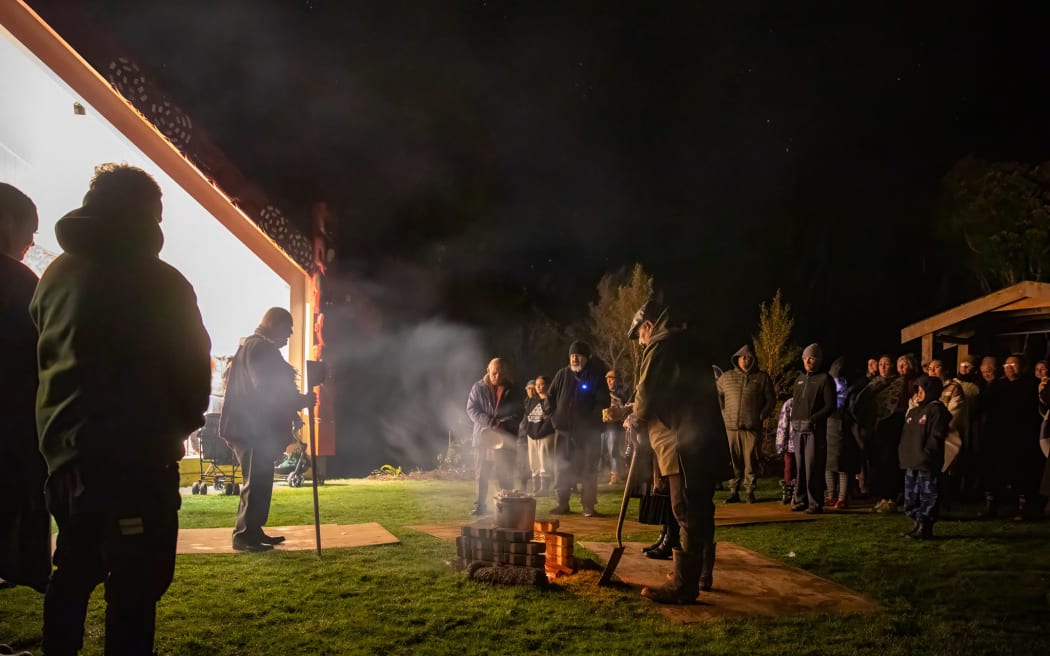New education and culture centre will be a place to tell stories of tangata whenua
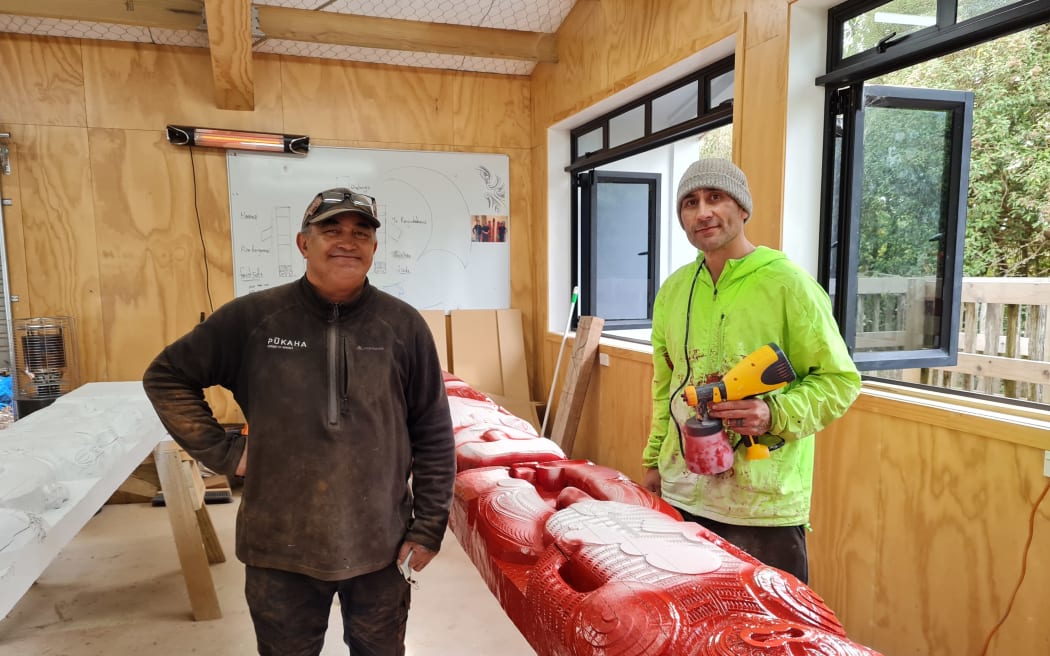
The Pūkaha National Wildlife Centre in the northern Wairarapa has opened a new educational and cultural complex.
The complex, named Te Wānanga Taiao, includes a marae, wharenui, wharekai and accommodation facilities.
Pūkaha has been working closely with tangata whenua Rangitāne on the project.
Rangitāne o Wairarapa kaumātua Mike Kawana said Pūkaha was a small remnant of a much larger forest.
"I te tīmatanga he nunui rawa Te Tapere Nui o Whātonga nei... ko tētahi pito kei te Wairarapa, ā ka whārikihia te whenua mai i te Wairarapa tae atu ki Tamaki Nui-ā-Rua.
"I roto i te reo Pākeha ko Ninety Mile Bush tētahi o ngā ingoa, kātahi ko Seventy Mile Bush, ko Forty Mile Bush ā ko tēnei ka tū nei ko Pūkaha ko tōna toinga."
(In the begining this forest, Te Tapere Nui o Whātonga, one end was in Wairarapa and it carpeted the land all the way to Tamaki Nui-ā-Rua Dannevirke. In English it was called Ninety, Seventy or Forty Mile Bush and this forest here at Pūkaha is what remains.)
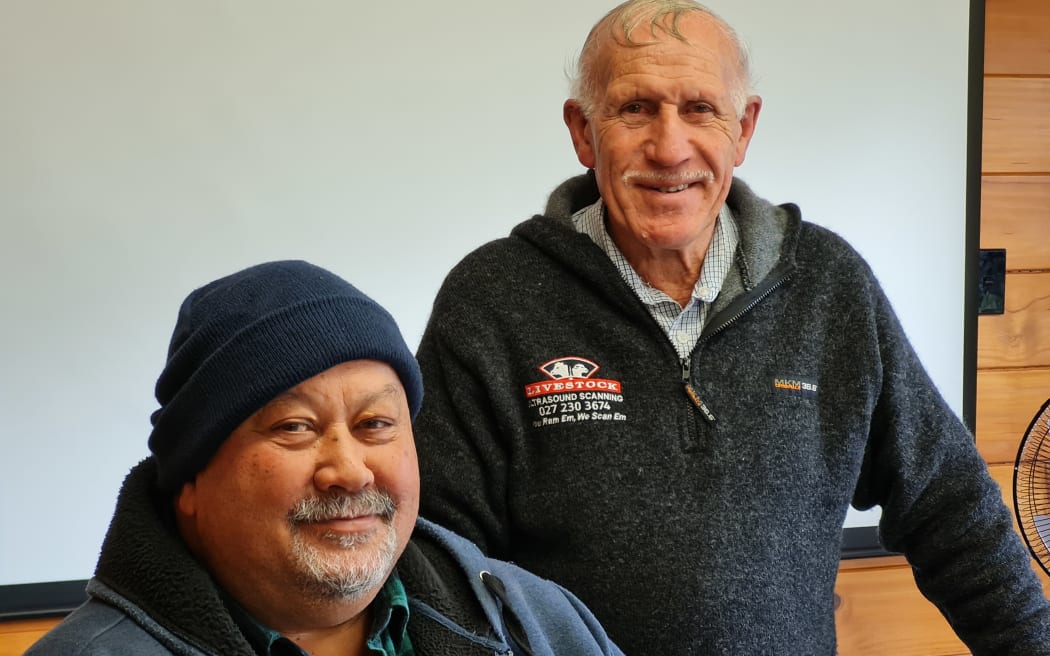
Rangitāne o Tamaki-Nui-ā-Rua kaumātua Manahi Paewai said in the past the forest was a place to gather kai, and a place of shelter for the people of Rangitāne.
"He wahi mā Rangitāne o te Wairarapa, Rangitāne o Tamaki Nui-ā-Rua, te noho tahi me te hui tahi me te kōrero tahi me te wānanga tahi. Koina tētahi o ngā take nui mō tēnei takiwā, mō ēnei whare."
(This was a place for two branches of Rangitāne to meet, to talk, to hui, to debate. That was a big purpose for this place and for these new facilities.)
The concept for the new whare complex, Te Wānanga Taiao began four years ago as a proposal to build onsite accommodation for students.
Pūkaha general manager Emily Court said the new facilities will help fulfill a core kaupapa of educating young people and creating good kaitiaki while making Pūkaha more financially stable and robust in the long term.
"So this facility stacked up in lots of ways and I was soon convinced that it was the right thing to do. The design was started and working with Rangitāne, a whole other perspective was introduced and that was creating a space for Rangitāne here and actually creating a marae on site at Pūkaha and bringing together Wairarapa and Tamaki Nui-ā-Rua in this central place."
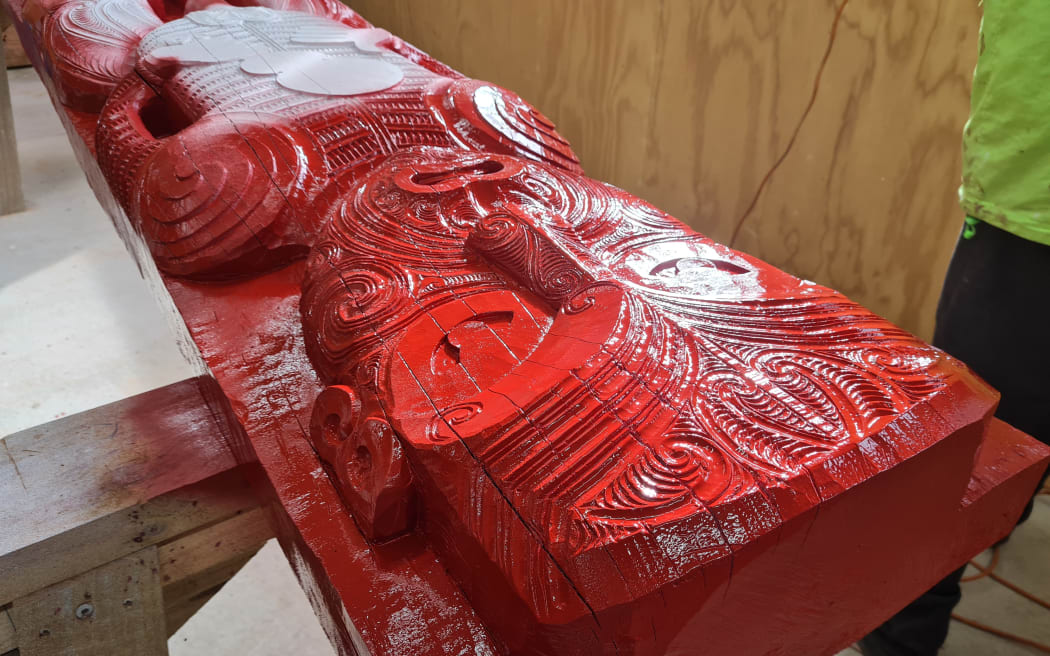
Court said as people come through the facility they will have the chance to be educated on Rangitāne stories and history.
Pūkaha board co-chair Mavis Mullins said as Pūkaha continues to evolve the Rangitāne history, kaupapa, and whakapapa will only become stronger.
"Our people are here, Rangitāne are here. We've been co-developing all the way through, whether it be the actual physical structure, physical facilities, whether it's been bringing in partners who have shared values, whether it's been kaimahi who are able to authentically tell our story. We're here."
A team of carvers who are employed full time at Pūkaha have been working on the whakairo for the wharenui of Te Wānanga Taiao over the past year.
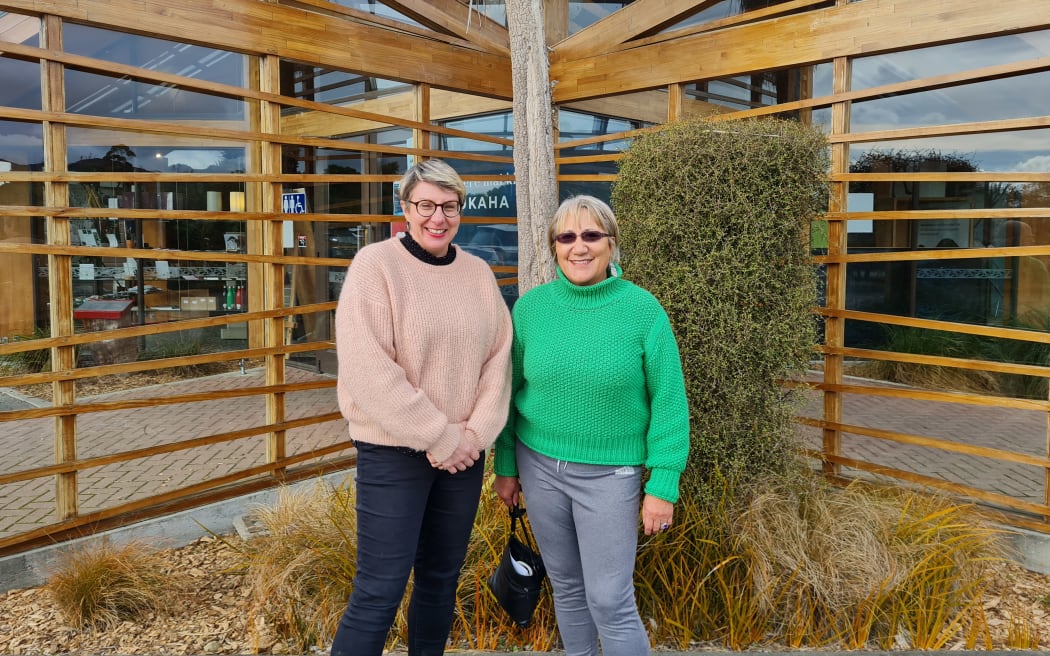
Head carver Tipene Kawana said he could not wait to see the carvings made by him and his team up on the walls of the wharenui.
"That is going to be the light of it all, once they go up that's the icing on the cake.
"Last week I did my last notches with the chisel, I could feel a big weight being lifted of my shoulders, now I'm doing some final touches and cleanup jobs."
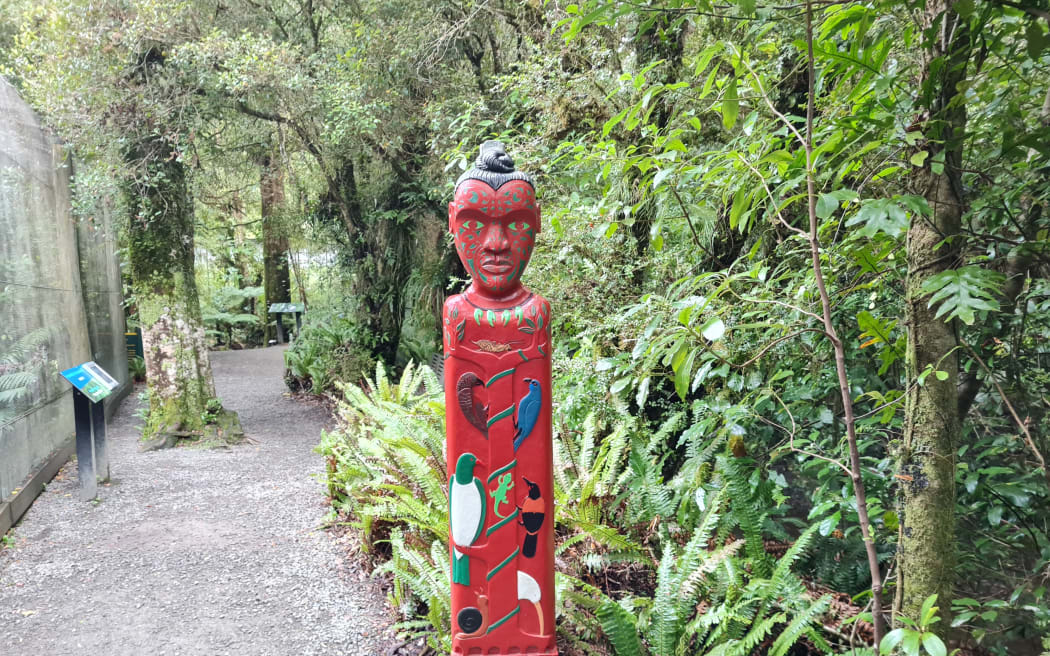
The carvers were not the only artists involved with bringing the wharenui to life.
Beside the complex an arts studio has been set up for the whare pora, where weavers and painters will bring their art into the wharenui.
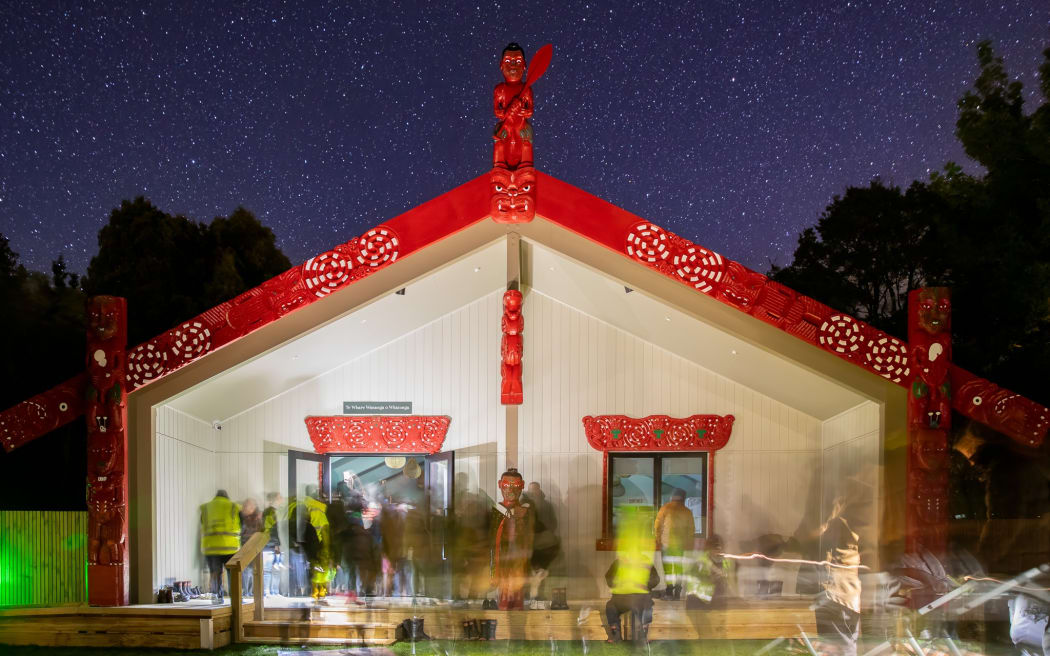
On Thursday iwi members attended a private dawn ceremony to open the whare followed by a hautapu to honour Matariki.
Mike Kawana said they were mindful of making space for all members of the iwi in the opening.
"Hei whakaarotanga mō tātau o Rangitāne kia tuku atu wētahi wāhanga ki ngā mea rangatahi e heke mai ana, e ako mai ana, tipu mai ana i roto i te ao Māori, kia taea e rātau te tū hei rangatira mō tātau.
"Ahakoa taua kōrero 'he rangatira mō apōpō' ko tā tātau, hei me tū hei rangatira mō te rā nei."
(Us of Rangitāne need to be thinking about how to make space for those who are coming through, who are learning, who grew up in te Ao Māori so they can be leaders of our iwi. Despite the saying 'leaders of tomorrow' we want the to stand as leaders today.)
Te Wānanga Taiao will be officially opened to the public Friday afternoon.
